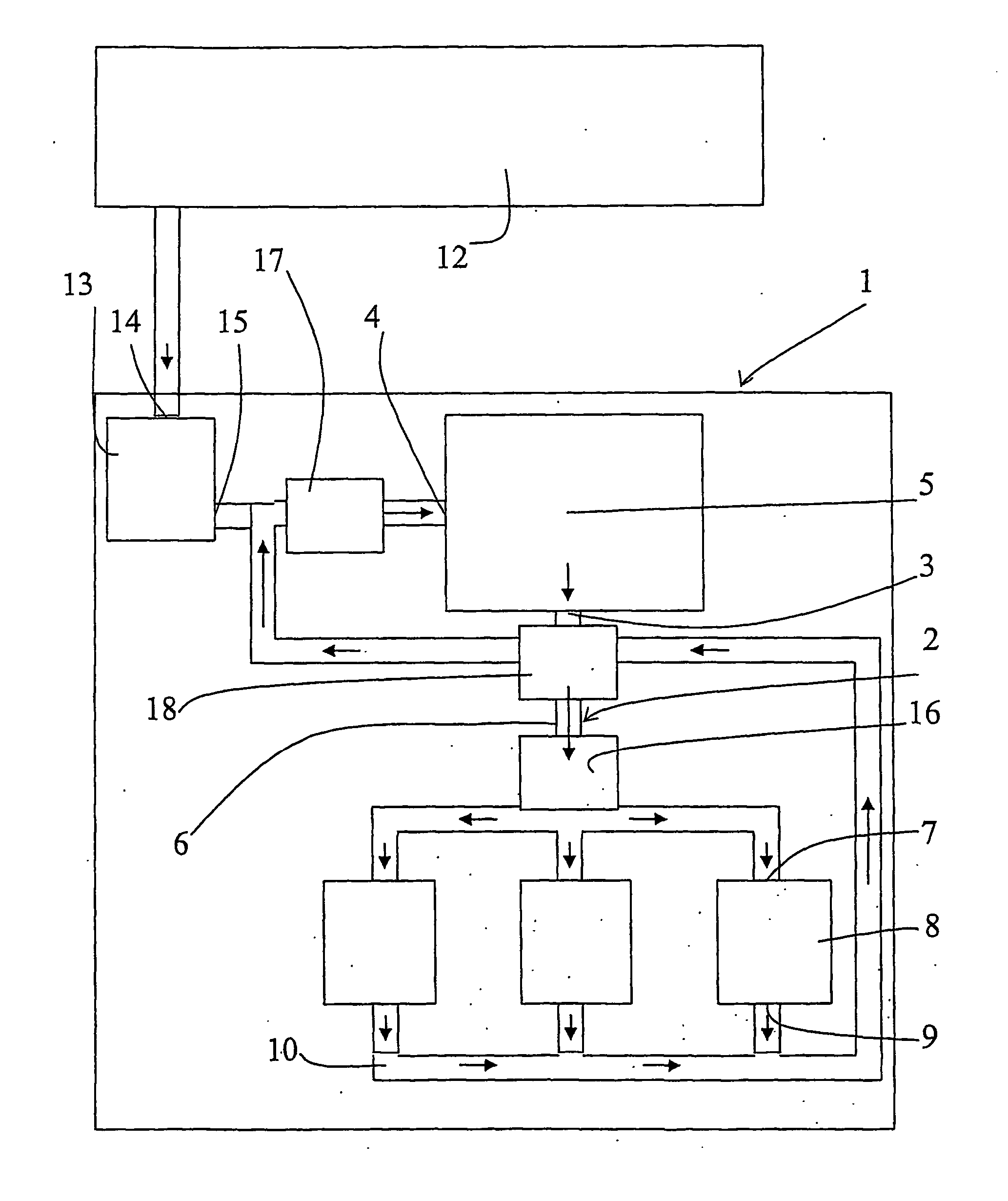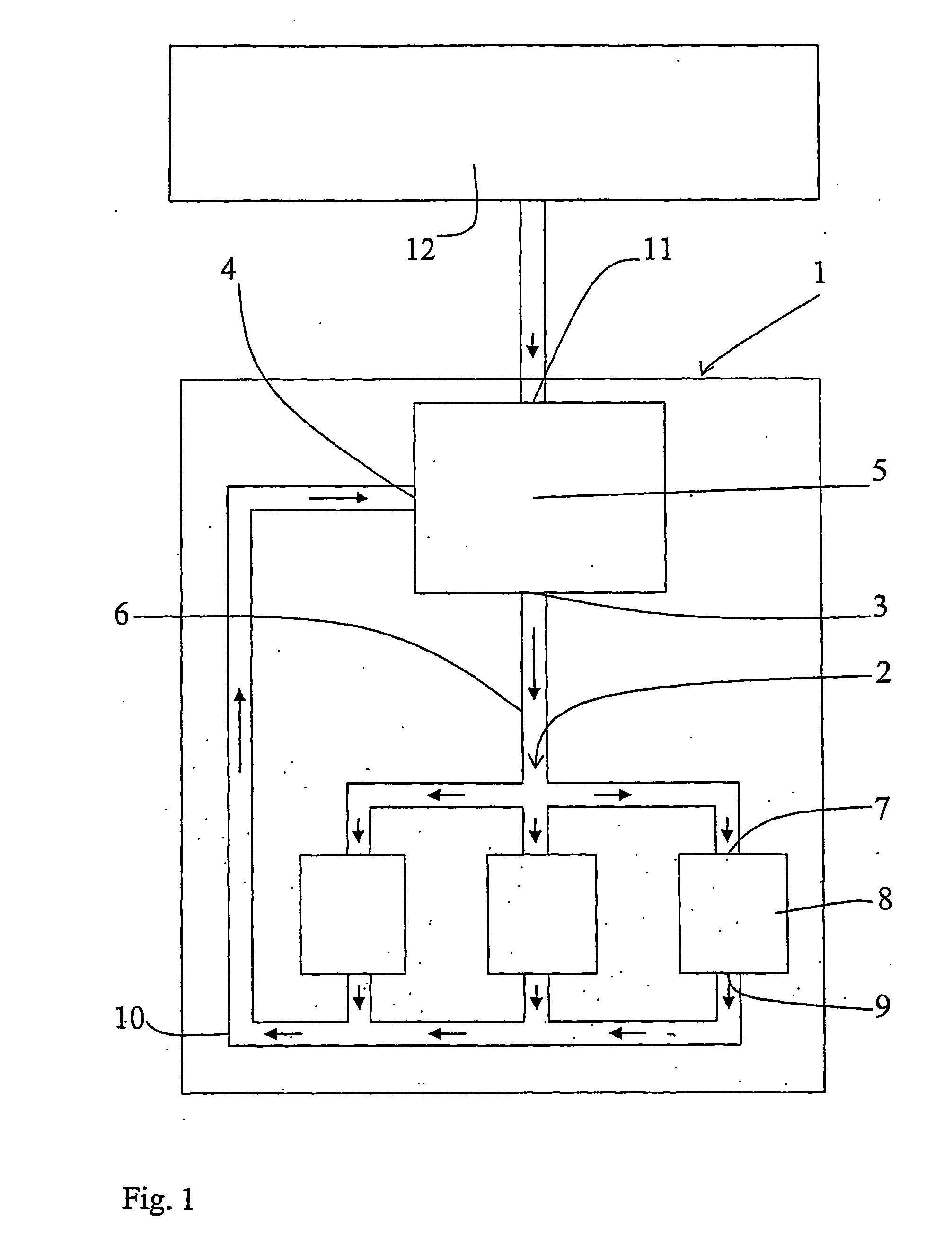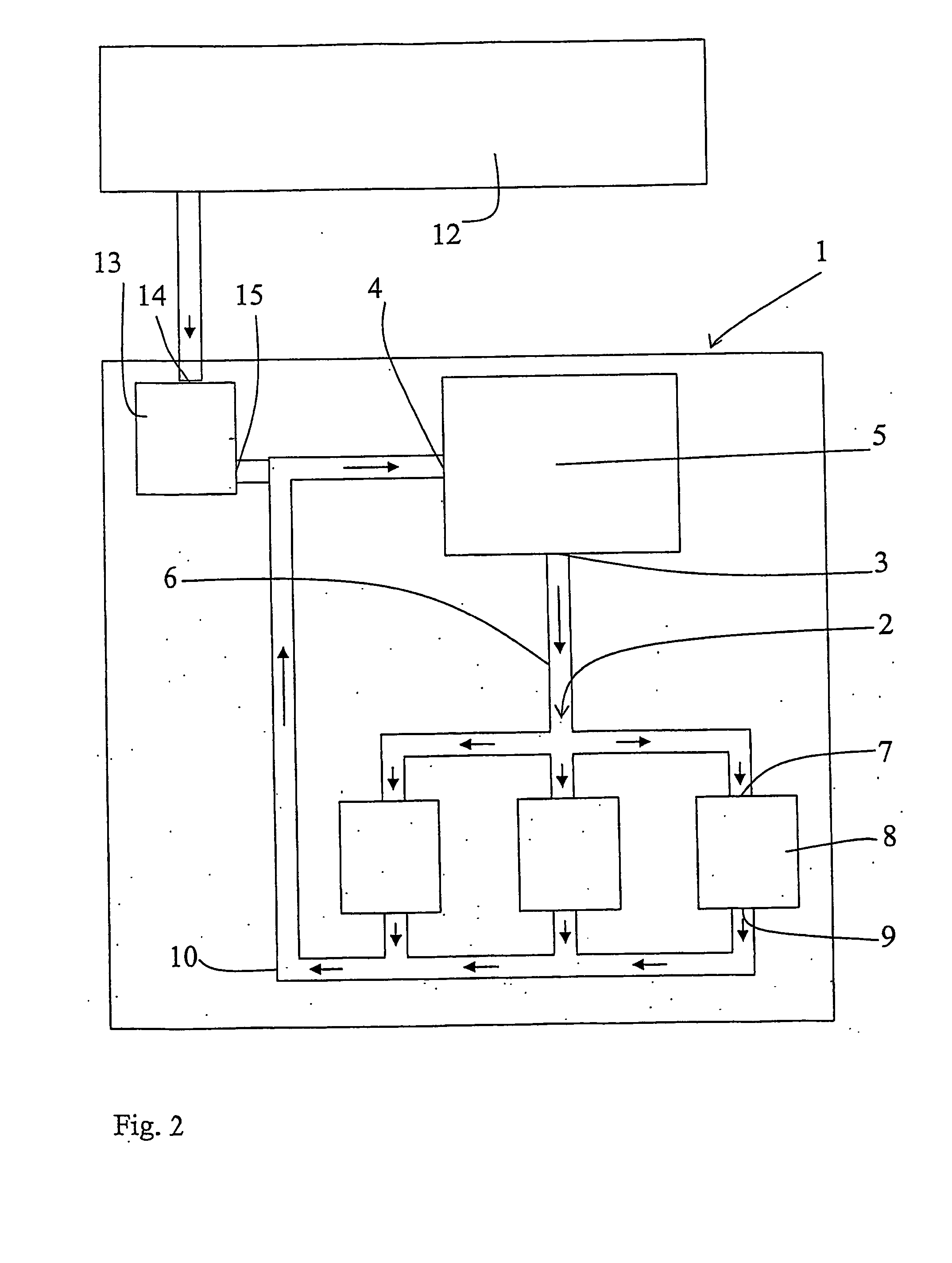[0008] The object of the invention is to provide a method and a device to satisfy the need of pressure fluid, air or other gas for the operation of a tool while, simultaneously, the
heat losses appearing in the circuit are minimized.
[0009] It is a further object of the invention to provide a method and a device that permits the use of the compressor with a relatively low capacity, that is a low consumption of air energy, for the operation of a specific tool. SUMMARY OF THE INVENTION
[0011] The invention is based on the conclusion that, if the required pressure fluid is generated through compression without the contemporary temperature increase, the
heat losses can be reduced to a corresponding degree, and the compressor can be made substantially smaller, which in many cases is of important
advantage.
[0012] According to the present invention, the temperature increase by the compressor becomes very small as the compression is performed from an elevated pressure, higher than the pressure of the surrounding
atmosphere, resulting in remarkably small
heat losses for a particular absolute
pressure increase. One condition is that the environment in which a conduit conducts the pressure fluid from the compressor to the tool has a certain
maximum temperature which is lower than the temperature that the pressure fluid would have upon compression from
atmospheric pressure up to the required pressure. Furthermore, the length of the conduit should be such that it causes heat exchange that would normally lower the temperature of the pressure fluid to the temperature of the surrounding. A realisation of the invention results in a remarkably lower compression temperature, temperature of the compressed gas, resulting in the potential for heat losses decreasing and the potential for
heat supply increasing.
[0019] In the following example of the invention, it is shown how the potential for heat losses can be reduced to a remarkable degree. An adiabatic compression of
atmospheric air of 1 bar absolute and a temperature of 300 K to the pressure of 10 bar absolute, that is a
pressure difference of 9 bar, results in a final temperature of approximately 579 K. The potential for heat losses up to the user site, having the surrounding temperature of 300 K, is 579 minus 300, that is 279 degrees. In a
closed system according to the invention, where the air pressure is 11 bar absolute and the temperature is 300 K before the adiabatic compression up to 20 bar absolute, that is a
pressure difference of 9 bar, a final temperature of approximately 356 K is obtained. The potential for heat losses up to the user site is 356-300, that is 56 degrees. In the first case, the temperature becomes 279 degrees higher than the temperature of the environment, and in the latter case it becomes 56 degrees higher. The latter, inventive case results in a remarkably lower potential for heat losses to the environment. Simultaneously, the potential for
heat supply increases. According to this example, heat sources with a temperature of more than 356 K can be used for the purpose of increasing the temperature in the air compressed to 20 bar. This, in its turn, results in a volume increase which means that a smaller amount of air of 20 bar must be produced for a certain need, in its turn resulting in a decreased need of compressor work.
[0020] By the implementation of the invention,
piston compressors may be substituted by smaller, for example rotating compressors with better flow capacity but operating with a low
compression ratio for the purpose of maintaining the efficiency at a reasonable level. The required displacement decreases with an increased return pressure, in its turn resulting in less friction and less heat-transferring surfaces. Preferably,
waste heat or any other heat source is used for heating the air, or at least minimizing the cooling thereof, before it is supplied to the working tool. Then, also a cooling of the fluid before the compression is needed. Advantageously, heat is regained from the return air before the latter is finally cooled before the compression thereof (if the temperature is higher than after the compression, which could be the result of to much heat being supplied from the heat source upstream the tool) and before any heat is supplied from the heat source. With this heating and cooling there is presented a pneumatic energy
transformer, and more work is produced by, for example, a working tool or an expander than supplied by the compressor, thanks to the external supply of heat. In a
closed system, the need of removal of condenser water is minimized.
 Login to View More
Login to View More  Login to View More
Login to View More 


